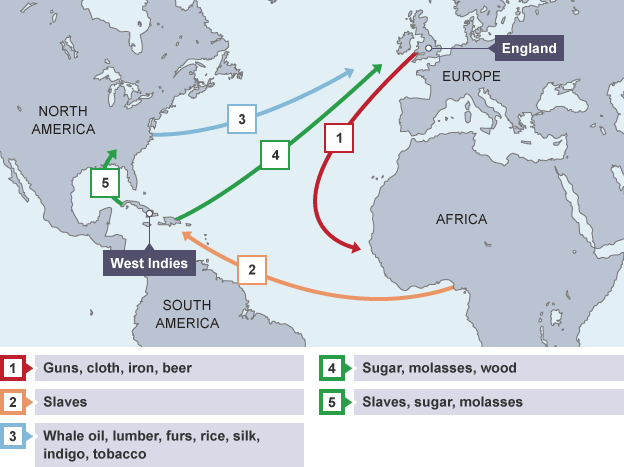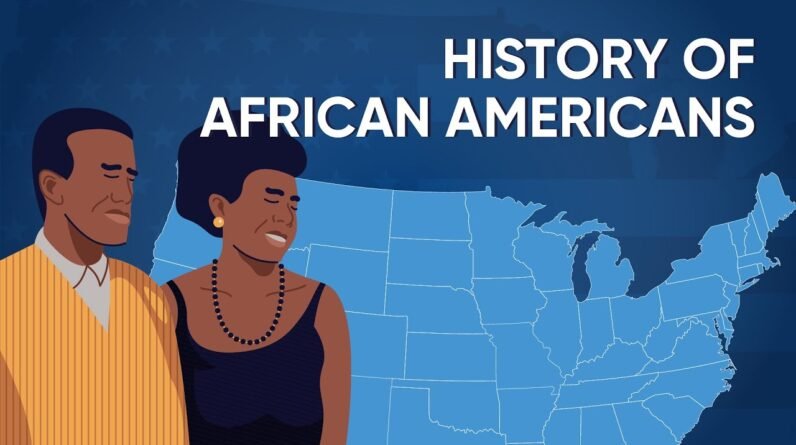
Origins of African American Vernacular English
Origins of African American Vernacular English. Have you ever wondered how African American Vernacular English (AAVE) developed? In this article, we will explore the fascinating origins of AAVE, a unique dialect used primarily by African Americans in the United States. From its roots in the African slave trade to its ongoing evolution today, AAVE is a testament to the resilience and creativity of an entire culture. Join us on this linguistic journey as we uncover the historical and social influences that have shaped AAVE into the vibrant language it is today.
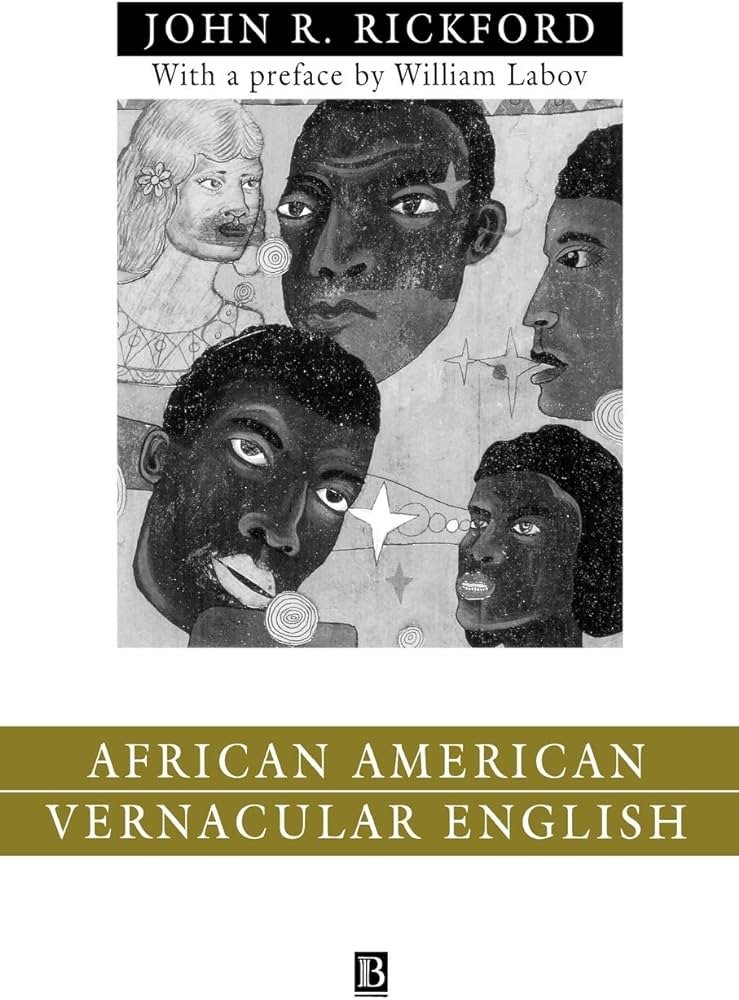
Overview of African American Vernacular English
African American Vernacular English (AAVE) is a distinct variety of English spoken predominantly by African Americans in the United States. It is also known by other names such as African American English, Black English, or Ebonics. AAVE exhibits unique linguistic features that set it apart from Standard English or other regional dialects.
Definition
AAVE is characterized by its phonological, grammatical, and lexical differences from Standard English. It encompasses a wide range of language varieties that have developed over time within African American communities. While AAVE shares many similarities with other dialects, it has its own set of rules and structures that make it a distinctive linguistic system.
Characteristics
AAVE is known for its phonological features, such as the use of distinct vowel sounds and stress patterns. It also exhibits grammatical differences, including the use of double negatives for emphasis and the absence of the copula “to be” in certain contexts. Additionally, AAVE has a rich lexicon that includes words and expressions influenced by African languages, as well as unique idiomatic expressions and proverbs.
Origins of African American Vernacular English
The origins of AAVE can be traced back to various historical and linguistic factors that have shaped its development over time. These factors include language contact, African linguistic influence, and the Creole language hypothesis.
Language Contact
Language contact played a significant role in the formation and evolution of AAVE. During the period of slavery in the Americas, African slaves were forcibly brought to different regions and had to adapt to new linguistic environments. This resulted in the mixing of African languages with English and other European languages, leading to the emergence of AAVE.
African Linguistic Influence
African linguistic influence on AAVE can be seen in its phonetic, grammatical, and lexical features. The retention of African language features, such as tonal patterns and syllable structure, contributed to the distinctive characteristics of AAVE. These linguistic influences reflect the African origins of the enslaved Africans and their contributions to the development of African American culture and language.
Creole Language Hypothesis
The Creole language hypothesis suggests that AAVE originated as a creole language, which is a stable and fully developed language that arises from a mixture of different languages. This hypothesis posits that AAVE emerged as a result of the contact between African languages, English, and other European languages during the early stages of slavery in the Americas.
Language Contact and Influences on African American Vernacular English
Language contact in the Americas played a crucial role in shaping AAVE by introducing various linguistic influences. These influences come from European languages, as well as Native American languages.
Early Language Contact in the Americas
The early contact between African slaves and English speakers in the Americas resulted in the blending of African languages with English. This contact led to the formation of pidgin languages, which were simplified forms of communication that arose out of necessity. These pidgins eventually developed into Creole languages, including AAVE.
Influences from European Languages
The presence of European colonizers in the Americas brought about the introduction of words, grammatical structures, and pronunciation patterns from languages such as Portuguese, French, and Spanish. The linguistic interactions between African slaves, European colonizers, and English speakers contributed to the development of AAVE as a distinctive dialect with European linguistic influences.
Influences from Native American Languages
Native American languages, particularly those spoken by tribes in the Southeastern United States, also influenced the development of AAVE. This influence can be seen in the vocabulary and pronunciation patterns of AAVE, as well as in certain grammatical constructions. The contact between African slaves and Native American communities allowed for the exchange of linguistic features between the two groups.
African Linguistic Influence on African American Vernacular English
The African linguistic influence on AAVE is evident through various features that can be traced back to West African languages.
West African Language Features
AAVE exhibits several phonological and grammatical features that can be traced back to West African languages. These features include tonal patterns, syllable structure, and rhythmic elements. The influence of West African languages on AAVE reflects the linguistic heritage of African slaves and their contribution to the development of AAVE as a distinct variety of English.
Retentions from West African Languages
Retentions from West African languages in AAVE can be seen in its lexicon, idiomatic expressions, and grammatical structures. Words or phrases derived from African languages have been assimilated into AAVE, preserving elements of African culture and identity. These retentions serve as a testament to the resilience of African linguistic influence within AAVE.
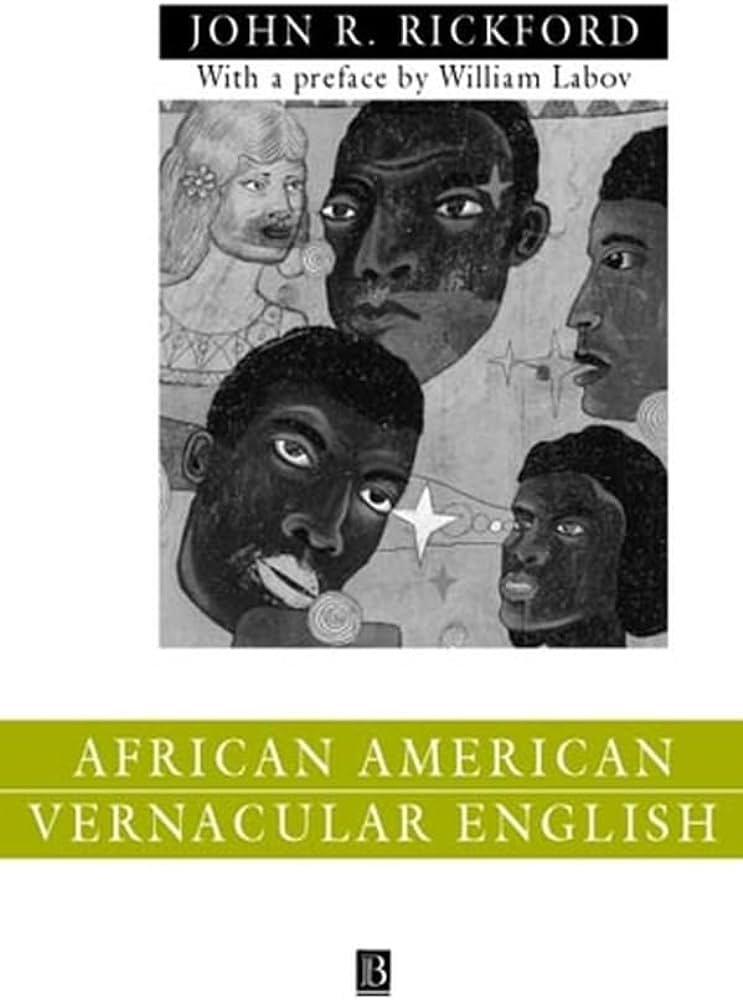
Creole Language Hypothesis of African American Vernacular English
The Creole language hypothesis posits that AAVE originated as a fully developed creole language resulting from contact between African languages, English, and other European languages.
Pidgin and Creole Languages
Pidgin languages are simplified forms of communication that arise in situations where different groups with no shared language need to communicate. Creole languages, on the other hand, are stable and fully developed languages that arise from the pidgin stage. Creole languages have distinct linguistic features and grammatical structures.
Creolization Process
The creolization process involves the transformation of a pidgin language into a creole language over time. This process occurs when a simplified pidgin language becomes the native language of a community, leading to the development of a more complex and grammatically sophisticated creole language.
Evidence for Creole Origins
There is evidence to support the creole origins of AAVE, such as the presence of similar linguistic features seen in other creole languages spoken around the world. Additionally, the linguistic patterns of AAVE align with the stages of the creole language development process, further supporting the hypothesis that AAVE is a creole language.
Historical Factors in the Development of African American Vernacular English
Several historical factors have influenced the development of AAVE as a distinct variety of English.
Enslavement and Forced Migration
The enslavement of Africans and their forced migration to the Americas resulted in the formation of African American communities with distinct linguistic practices. The linguistic heritage brought by African slaves, combined with the influence of the English-speaking majority, shaped the development of AAVE.
Slave Trade Routes and Linguistic Mixture
The slave trade routes played a significant role in shaping AAVE by facilitating the linguistic mixture between African languages, European languages, and English. Slaves from different African regions brought with them diverse linguistic backgrounds, which contributed to the rich linguistic diversity found in AAVE today.
Linguistic Discrimination and Social Identity
Linguistic discrimination and social identity have also played a role in the development of AAVE. Negative attitudes towards AAVE and its speakers have perpetuated linguistic prejudice, leading to the marginalization and stigmatization of AAVE within mainstream society.
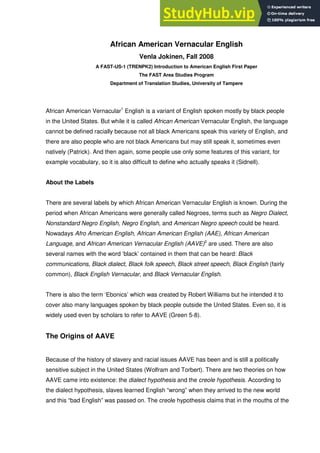
Sociolinguistic Perspectives on African American Vernacular English
Sociolinguistics is the study of language variation and how it is influenced by social factors. Understanding the sociolinguistic perspectives on AAVE provides insights into its usage and reception.
Language Variation and Social Factors
The variation in language use within AAVE is influenced by factors such as age, education level, and geographical location. Sociolinguistic research has shown that speakers of AAVE can vary in their usage of certain linguistic features based on social contexts and individual characteristics.
Attitudes and Perceptions
Attitudes towards AAVE vary among different social groups. Some view AAVE negatively, associating it with stereotypes and linguistic inferiority. However, there is also a growing recognition and appreciation for AAVE as a valid linguistic variety with its own cultural significance.
Code-Switching and Bi-Dialectalism
Code-switching refers to the practice of switching between different languages or dialects within a conversation. Many speakers of AAVE are also proficient in Standard English and may use code-switching as a communicative strategy based on social and situational factors. This ability to navigate between AAVE and Standard English demonstrates a bi-dialectal competence.
African American Vernacular English in Contemporary Society
AAVE continues to play a significant role in contemporary society, particularly in popular culture, education, and individual identity.
Popular Culture and Media Influence
AAVE has had a profound influence on popular culture and media, with its linguistic features and expressions being incorporated into music, film, and other forms of entertainment. From hip-hop music to viral social media trends, AAVE has gained widespread recognition and has become an integral part of contemporary youth culture.
Education and Language Policies
In education, AAVE has been a subject of debate regarding its use in classrooms and its impact on the academic success of African American students. Language policies have varied, with some schools recognizing and valuing AAVE as a cultural resource, while others have attempted to suppress or eradicate it in favor of Standard English.
Linguistic Empowerment and Identity
For many African Americans, AAVE is a vital component of their cultural identity and serves as a means of self-expression. Embracing and valuing AAVE can contribute to the linguistic empowerment of African American communities and foster a sense of pride in their linguistic heritage.

Misconceptions and Stereotypes Surrounding African American Vernacular English
AAVE has often been subject to misconceptions and stereotypes that perpetuate linguistic prejudice and discrimination.
Dialect Shaming and Linguistic Prejudice
Dialect shaming refers to the stigmatization and denigration of non-standard dialects, including AAVE. These negative attitudes towards AAVE can lead to linguistic prejudice, whereby speakers of AAVE are judged or discriminated against based on their language use.
Standard English as a Dominant Ideology
The dominance of Standard English as the prestige dialect in society has contributed to the marginalization of AAVE. The expectation that everyone should conform to Standard English standards overlooks the linguistic diversity and rich linguistic traditions of AAVE.
Revisionist Views and Linguistic Diversity
Revisionist views challenge the perception that AAVE is a deviation from the norm, highlighting its linguistic complexity and cultural significance. Recognizing and celebrating the diversity of languages and dialects, including AAVE, is essential for promoting linguistic equality and combating linguistic discrimination.
Linguistic Research and Future Directions for African American Vernacular English
Linguistic research on AAVE continues to shed light on the structure, usage, and social dynamics of the dialect. The future directions for AAVE research involve social implications and policy recommendations, as well as community-based approaches to language preservation.
AAVE as a Research Area
AAVE has become an established area of study within linguistics, with researchers exploring various aspects of its phonology, grammar, and sociolinguistic patterns. Ongoing research on AAVE contributes to our understanding of language variation and its role in shaping individual and group identities.
Social Implications and Policy Recommendations
Research on AAVE has important social implications, as it can inform language policies and educational practices. Recommendations for policy-makers include recognizing and valuing AAVE in educational settings, promoting linguistic diversity, and challenging linguistic prejudices and stereotypes.
Community-Based Approaches and Language Preservation
Community-based approaches to language preservation involve engaging with African American communities to promote the maintenance and revitalization of AAVE. Empowering communities to take ownership of their language and supporting efforts to preserve and pass on AAVE to future generations can help ensure the continued vitality of the dialect.
Frequently Asked Questions (FAQs) about African American Vernacular English (AAVE)
1. What is African American Vernacular English (AAVE)?
AAVE is a distinct variety of English traditionally spoken by many African Americans in the United States. It has unique grammar, pronunciation, and vocabulary that differentiate it from Standard American English.
2. Is AAVE “improper” English?
No, AAVE is not “improper” English. Linguists recognize it as a legitimate, rule-governed linguistic system. It is a fully developed variety of English with its own consistent grammar and phonology.
3. What are some key features of AAVE?
Key features of AAVE include:
– Grammar:Omission of “is” or “are” (e.g., “She working” instead of “She is working”).
– Double negatives:”I ain’t got no money.”
– Habitual “be”:Expressing repeated actions (e.g., “He be working” means “He works regularly”).
– Pronunciation:Dropping of “r” or “l” sounds (e.g., “fo'” instead of “four”).
4. How did AAVE develop?
AAVE evolved during the historical interactions between enslaved Africans and English-speaking communities. It reflects influences from West African languages and developed further through social and cultural isolation within African American communities.
5. Is AAVE the same as “Ebonics”?
“Ebonics” is an older term coined in the 1970s to describe the linguistic practices of African Americans. Today, “AAVE” is the preferred and more linguistically accurate term used by scholars and linguists.
6. Is AAVE only spoken by African Americans?
While AAVE is most closely associated with African American communities, it is sometimes spoken by people of other ethnic backgrounds, particularly in diverse urban areas where AAVE is prevalent.
7. Does AAVE vary across regions?
Yes, like all dialects, AAVE has regional variations. However, there are many shared features that make it identifiable as a distinct linguistic variety.
8. Is AAVE taught in schools?
AAVE is not typically taught in schools, as Standard American English is the primary medium of instruction. However, some schools use AAVE as a bridge to help students transition to Standard English, recognizing its value as a linguistic resource.
9. Is AAVE accepted in society?
The acceptance of AAVE varies by context. It is widely embraced in popular culture, such as music and social media, but it can face stigmatization in formal settings like workplaces or schools. This double standard often leads to discrimination against AAVE speakers.
10. What role does AAVE play in pop culture?
AAVE has significantly influenced pop culture, particularly through music genres like hip-hop and R&B. Many AAVE phrases, such as “lit,” “shade,” and “on fleek,” have become mainstream.
11. Is it okay for non-Black people to use AAVE?
The use of AAVE by non-Black individuals can be sensitive. Many view it as cultural appropriation, especially when AAVE features are used without understanding or respecting their cultural and historical context.
12. What challenges do AAVE speakers face?
AAVE speakers often encounter biases because AAVE is incorrectly perceived as “ungrammatical” or “slang.” This prejudice can affect their opportunities in education, employment, and social acceptance.
13. Can AAVE be considered its own language?
Linguists debate this, but most agree that AAVE is a fully developed dialect of English with systematic grammar, phonology, and vocabulary. Some consider it a creole or a separate linguistic system due to its unique features.
14. How do linguists study AAVE?
Linguists study AAVE through fieldwork, historical analysis, and linguistic theory. They explore its grammar, phonetics, syntax, and social significance, highlighting its complexity and legitimacy.
15. How can I learn more about AAVE?
To learn more about AAVE, you can explore books and articles by linguists such as William Labov, Geneva Smitherman, or Lisa Green. Documentaries and sociolinguistics courses also provide valuable insights.
